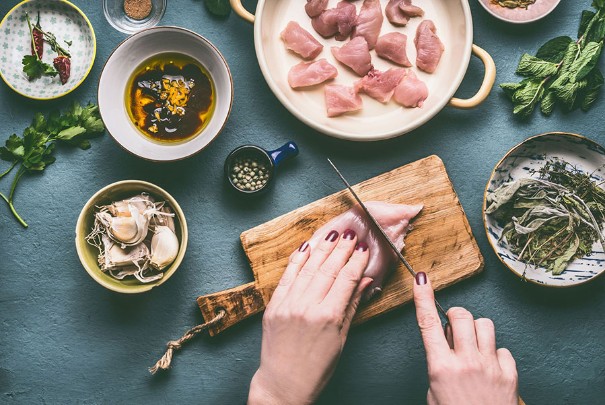The Bernard Rodriguez Journal
Exploring the latest trends and stories in news and lifestyle.
When Dinner Turns Dangerous: Surviving the Sneaky Threat of Food Poisoning
Uncover shocking truths about food poisoning and learn vital tips to keep your dinners safe. Don't let dinner become a dangerous affair!
5 Common Foods That Are Sneaky Sources of Food Poisoning
When it comes to food safety, many people are surprised to learn that their favorite meals can harbor bacteria that lead to food poisoning. Eggs are one such common food, often overlooked as a potential hazard. According to the CDC, raw or undercooked eggs can carry Salmonella, which can cause serious gastrointestinal illness. To mitigate this risk, it's essential to cook eggs thoroughly and avoid consuming dishes that use raw eggs, such as homemade Caesar salad dressing or certain desserts.
Another frequently ingested food that may surprise you is leafy greens. Foods such as spinach, lettuce, and kale can be contaminated with harmful bacteria like E. coli or Listeria. A report from the FDA highlights various outbreaks linked to contaminated greens. Washing your vegetables thoroughly and buying them from reliable sources can significantly reduce the risk of foodborne illness.

How to Recognize the Early Signs of Food Poisoning
Food poisoning can strike unexpectedly, often leaving individuals feeling unwell soon after consuming contaminated food or beverages. Recognizing the early signs is crucial for prompt action and recovery. The initial symptoms typically include nausea, vomiting, and diarrhea, which may appear within hours or days after ingestion. According to the CDC, these symptoms can resemble those of a common stomach virus, making it essential to pay attention to the context and timing of your symptoms.
In addition to gastrointestinal issues, individuals may also experience abdominal cramps, fever, and fatigue. If you notice these symptoms following the consumption of suspicious food, it’s best to seek medical advice, especially if symptoms persist. Staying hydrated is critical; make sure to drink plenty of fluids and consider seeking https://www.who.int/news-room/fact-sheets/detail/food-safety](
Is Your Kitchen a Breeding Ground for Bacteria?
The kitchen is often considered the heart of the home, but it can also become a breeding ground for bacteria if not maintained properly. Food preparation areas, cutting boards, and utensils can harbor harmful microorganisms such as Salmonella and E. coli. To keep your kitchen safe, it's essential to practice proper sanitation methods. For instance, the CDC suggests frequent hand washing and using separate cutting boards for raw meat and vegetables to prevent cross-contamination.
Moreover, kitchen sponges and dishcloths are notorious for accumulating germs. In fact, a study from NIH found that sponges can harbor more bacteria than a toilet seat! To combat this, replace sponges regularly and consider sanitizing them by microwaving them for a couple of minutes or running them through the dishwasher. By following these steps, you can ensure that your kitchen remains a safe and healthy environment, free from the threats posed by unwanted bacteria.